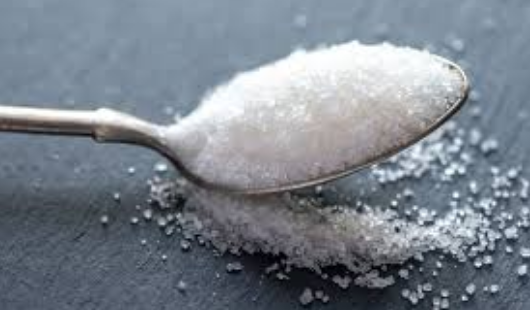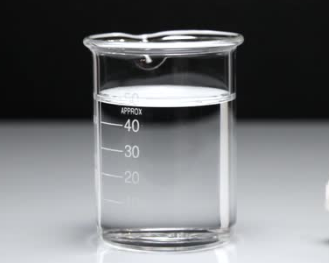Solute And Solvent Meaning
A solute is defined as the substance that is dissolved in a solution. A solute can come in many forms. It can be gas, liquid or solid. The solution that breaks the solute apart and distributes the solute molecules equally thereby creating a solution that is equal throughout.
Solutes in solution are measured by their concentration. The concentration of a solute is the amount of solute divided by the total volume of the solution. A solvent can dilute various amounts of solute, depending on how strong of a solvent is used and how easily the solute to dissolve in a solvent is known as solubility. Examples of a solute include salt, oxygen, protons in the cytosol, sugar, sodium hydroxide and potassium hydroxide.
A solvent is a substance that dissolves a solute, resulting in a solution. A solvent is usually a liquid but can also be a solid, or a supercritical fluid. The molecules of a solvent work to put the solute molecules apart; thereby, making the solute to become evenly distributed throughout the solvent. Water, Sodium hydroxide, potassium hydroxide, acetone and chloroform are common examples of a solvent.
However, a solvent can further be categorized into two types of solvents that is, polar solvents and non-polar solvents. Polar solvents work through the actions of positive and negative ends of each atom interacting with each other and the solute. Examples include sodium hydroxide, ethanol, methanol, propanol and potassium hydroxide. On the other hand, non polar solvents usually form opposite electrical charges between bonds. They dissolve substances like fats and oils. Examples of non-polar solvents include carbon tetrachloride, diethyl ether, and hexane and mthylene chloride.
Also Read: Difference Between Pure Substance And Mixture
Facts About Of Solute
- A solute is a substance that can be dissolved in a solution. A solute can either be a solid, gaseous or liquid.
- Boiling point of a solute is usually higher than that of a solvent.
- A solute can exist in solid, liquid or gaseous state at room temperature.
- Solubility of a solute depends on the properties of the solute such as surface area of the solute.
- In a solution, heat is transferred to the solute.
- Examples of a solute include sugar, salt, oxygen, Sodium Hydroxide and potassium hydroxide.
- In almost all types of solutions, the amount or volume of solute is less than that of the solvent.
- Solute particles tend to have a higher boiling point than solvents.
- The amount of solute in a solution is measured in terms of its concentration. The concentration of solute in a solution is determined by the ratio of the amount of solute and the total volume of the solution.
- In a heterogeneous mixture, the solute is not distributed uniformly and its concentration is different in different parts of the solution.
- In a homogeneous mixture, the solute completely dissolves in another substance, and the solute is uniformly distributed throughout the solution.
- Chemical structure also determines solubility of a solute. Polar solutes dissolves in a polar solvent and vice versa.

Also Read: Difference Between True Solution And Colloidal Solution
Facts About Solvent
- A solvent on the other hand, is a substance in which different compounds can be dissolved in order to form a solution.
- Boiling point of a solvent is usually lower than that of a solute.
- A solvent mainly exist in liquid state but can be gaseous as well at room temperature.
- Solubility of a solvent depends on the solvent properties such as polarity and temperature.
- In a solution, heat is transferred from the solvent.
- Examples of a solvent include water, ethanol, toluene, chloroform, acetone, milk.
- Most solvents are classified into two categories: the polar and non-polar solvents. Mercury forms a particular type of solvent referred to as amalgams.
- Water is a polar compound that is also considered as a universal solvent that dissolves a large number of solute particles.
- Solvent forms the medium of the solution that makes up most of the volume of the solution.
- The amount of solute that can be dispersed in the solvent depends on the temperature of the medium.
- The solvent and solute in a solution exist in the single-phase forming solute-solvent complexes, also referred to as solvates.
- The solvent breaks down the larger solute particle into smaller particles that can then be dispersed throughout the solution.

Also Read: Difference Between Mixture And Compound
Difference Between Solute And Solvent In Tabular Form
| Basis of Comparison | SOLUTE | SOLVENT |
| Meaning | A solute is a substance that can be dissolved in a solution. A solute can either be a solid, gaseous or liquid. | A solvent is a substance in which different compounds can be dissolved in order to form a solution. |
| Boiling Point | Boiling point is usually higher than that of a solvent. | Boiling point is usually lower than that of a solute. |
| Physical state | It can exist in solid, liquid or gaseous state. | Mainly exist in liquid state but can be gaseous as well. |
| Solubility | Solubility depends on the properties of the solute such as surface area of the solute. | Solubility depends on the solvent properties such as polarity and temperature. |
| Examples | Examples include sugar, salt, oxygen, Sodium Hydroxide and potassium hydroxide. | Examples include water, ethanol, toluene, chloroform, acetone, milk. |
Also Read: Difference Between Protic And Aprotic Solvent
Summary
What is the main difference between a solute and a solvent?
A solute is a substance that can be dissolved in a solution. A solute can either be a solid, gaseous or liquid. A solvent on the other hand, is a substance in which different compounds can be dissolved in order to form a solution.

what an awesome distinction!!!
amazing .. I got my assignments here correctly. thank you very much.
A good summary for us standard 8 students.
Very helpful thanks..
Nice stuff… simply great.
Thank u very much. It really was of help in my exams preparation.